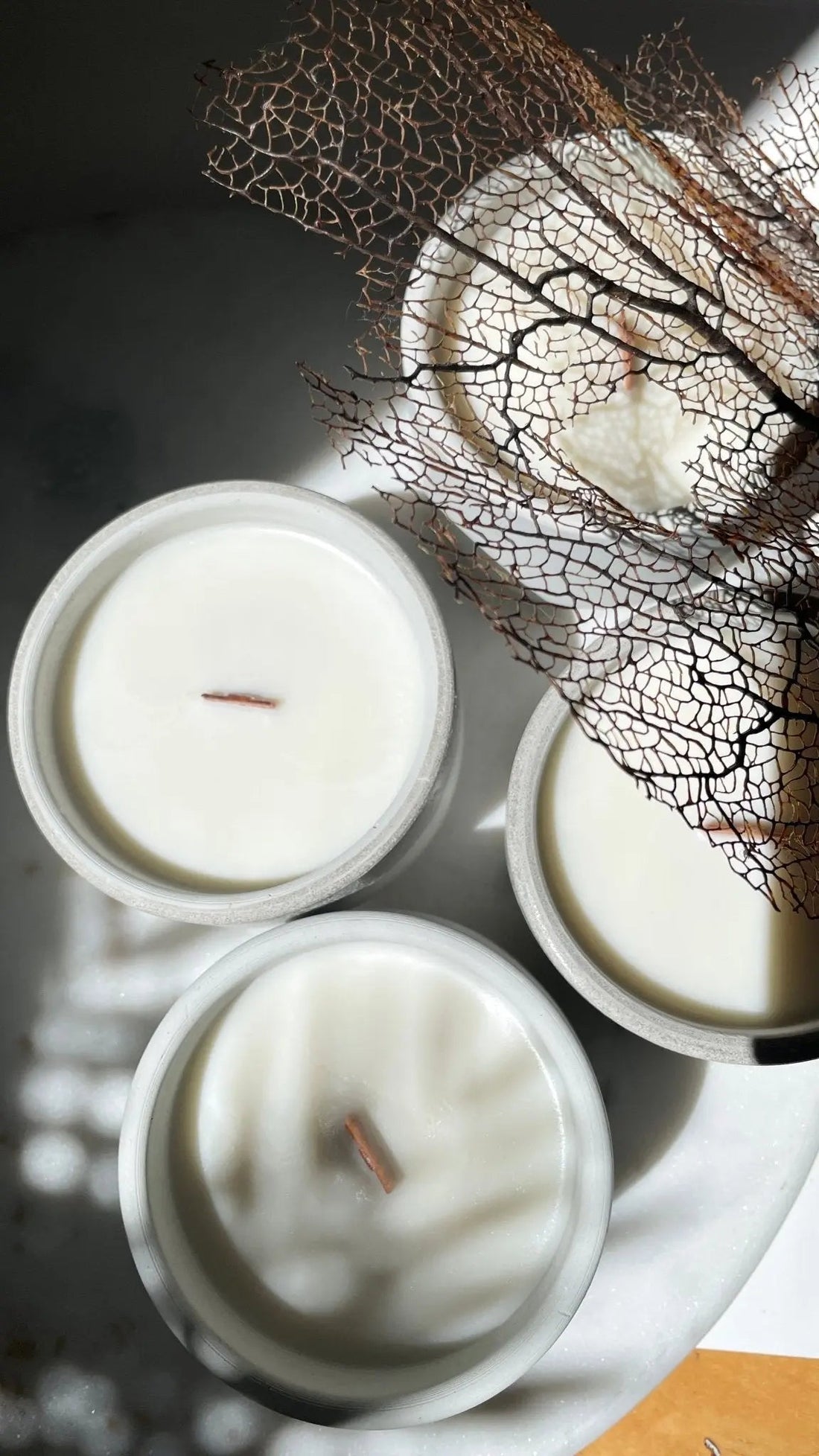
Candle burner good practice guide
Guide to Good Practice for Candle Burners
The secrets of ideal combustion.
LIGHT A CANDLE WITH A WOOD WICK.
Tilt the candle slightly, then light the wooden wick with a lighter or BBQ lighter for a few seconds. Wooden wicks take a little longer to ignite because the wood needs to be heated before it catches fire. So it may happen that your wick goes out on the first lighting. Light it a second time, it's normal, the wood can be temperamental.
EASE THE REIGNITION OF YOUR CANDLE.
Once your wick has cooled, simply remove the excess charred wood from the wick with your fingertips or with a wick trimmer. This will allow for easy lighting of your candle. Indeed, fire does not catch on already burned wood.
PRECAUTIONS TO TAKE
Cut the wick to 1/4" height before lighting the candle. Trim the wick every two to three hours to prevent a high flame.
Never leave debris or foreign objects on your candle.
Keep your candle away from flammable objects.
Keep lit candles out of the reach of children and pets.
Do not leave candles burning in a room unattended.
Do not leave your candle burning for more than 4 hours.
HOW MANY HOURS DOES MY CANDLE LAST?
Your 7oz Coral Cotton candle burns for an average of 40 hours. The burn time indicated implies optimal use of the candle.
You can leave it on for up to 4 hours, but it will burn out more quickly.
Before extinguishing it, make sure that the surface of your candle is COMPLETELY liquid to avoid forming holes/tunnels in it.
MY CANDLE MAKES A TUNNEL
Soy wax burns much slower than any other wax. This allows you to enjoy your candle longer, but it also means that you should let it burn long enough for the entire surface to be melted. You will need two to three hours to achieve a fully liquid surface.
Before extinguishing your candle, make sure the surface is COMPLETELY liquid. This will prevent you from digging a hole and wasting wax.
MY CANDLE EMITS BLACK SMOKE
The reasons can be multiple:
- A wick that is too long.
The wick must be very short at all times. We suggest using a wick trimmer to cut it to the optimal height; otherwise, a simple nail clipper will do the job.
- The candle has been lit for too long. Once the wax surface is completely liquid, extinguish your candle within the next hour.
Do not leave your candle burning for more than 4 hours. When the wax surface is liquid, the candle becomes hotter and a large amount of wax evaporates through the wick. This leads to less stable combustion and a flame that starts to flicker more strongly. When a flame dances too much, it begins to emit soot.
- The candle is in a draft. This causes the flame to move, which then emits soot. In this case, extinguish your candle, wait for your wax to cool, and gently move it to a less exposed location.
